While most of America, by now, may know about the existence of shale gas and Fracking, most do not know that the de facto energy plan of the US is an increased reliance on LNG (liquified natural gas) and that most of this LNG will have to be imported.
In terms of needed infrastructure, this means that the US needs
to develop significantly more LNG importation and processing facilities to meet this goal. The goal is mostly idiotic in that
a) it continues are use of fossil fuels and b) it provides us some time relief so that we can further delay the needed investments in alternative and renewable sources of energy and electricity generation.
This coming LNG economy is perhaps the most under reported big story in America although there are a few informative reports
now on this issue:
The Coming LNG Energy Economy. A very comprehensive study, still relevant even though its 10 years old, on the issue of North American supply of NG and the need for importing new NG (e.g. LNG) can
be found in this extensive report.
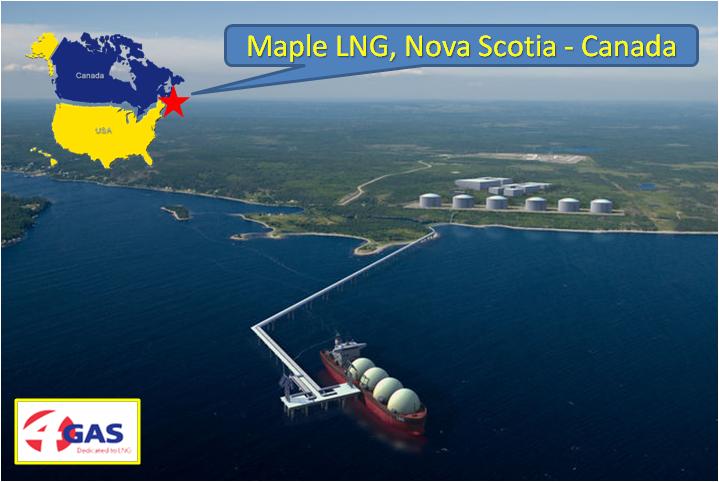 Most importation facilities, like the proposed one at Coos Bay, would be located on the coastline at places where there is fairly
ready access to the existing pipe line network in the US (which is quite extensive). The proposed LNG importation facility in Nova Scotia would look something like this: Most importation facilities, like the proposed one at Coos Bay, would be located on the coastline at places where there is fairly
ready access to the existing pipe line network in the US (which is quite extensive). The proposed LNG importation facility in Nova Scotia would look something like this:
There are many available projection about the near term future growth of this industry and some of that is displayed below:
Growth effective has doubled since 2005

Canada Imports are in decline: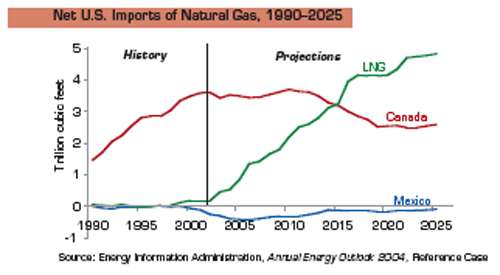
There has already been significant growth in LNG imports:
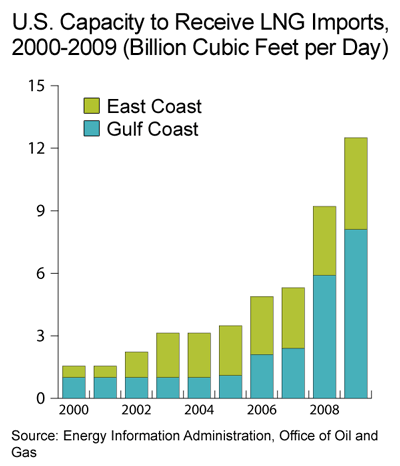
And Chevron has the boldest plans:
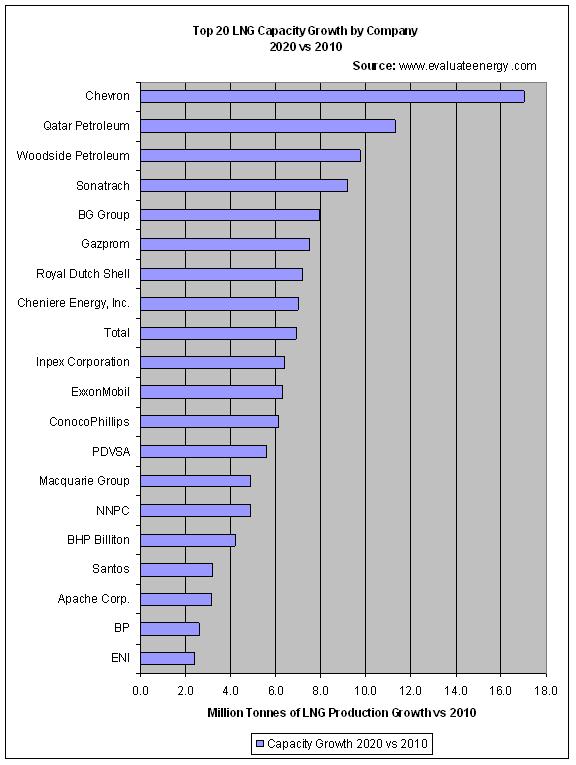
World Politics: China vs USA LNG import pathways
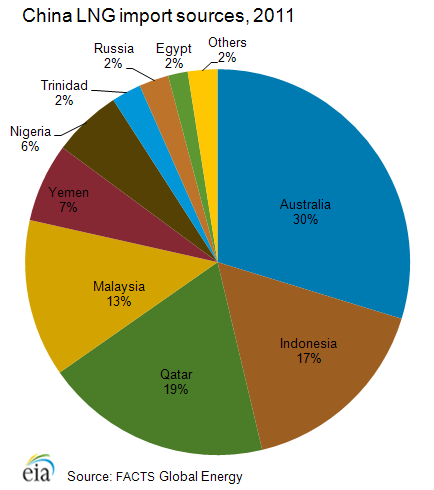 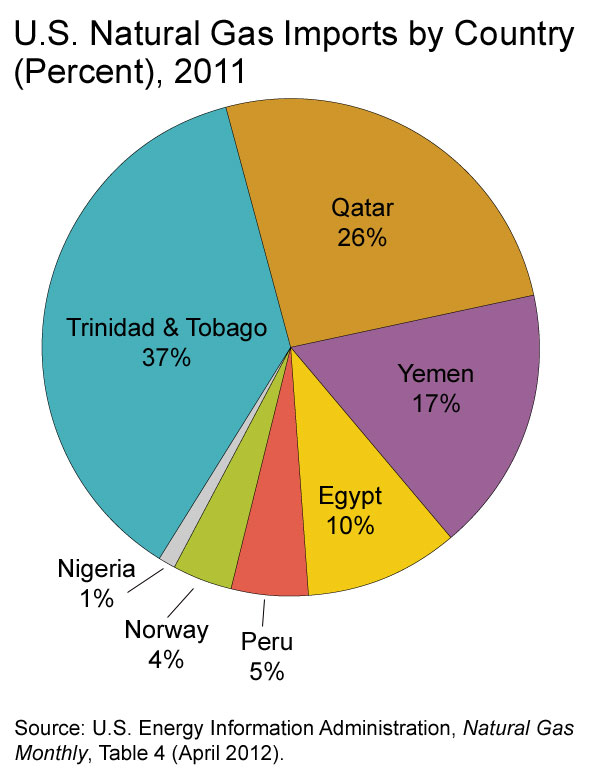
The overall delivery chain of LNG consists of a small number
of steps which lends itself to subsequent scalable, once step 3 is accomplished.
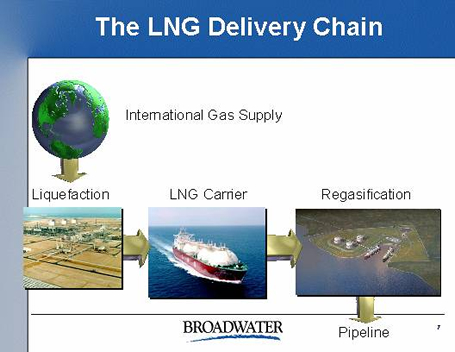
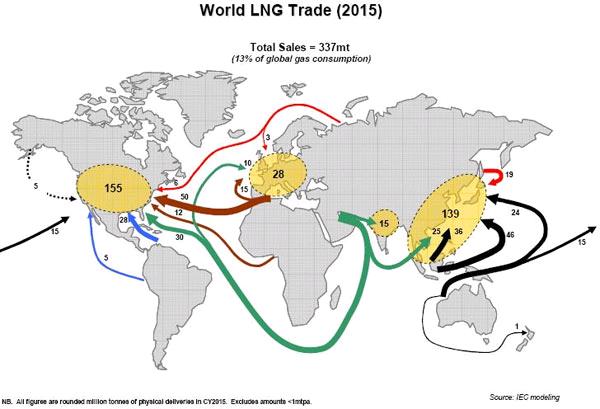
The sequence of images below show a) our current LNG import structure in the US, b) the situation on the pacific rim which is completely dominated by Japan who has beat their future on the
availability of LNGl c) the planned situation in the US, which
will dwarf Japan, making the US the largest consumer of LNG. This is completely at odds with one of our stated goals which is "energy independence" - but this is what is happening in the real world!
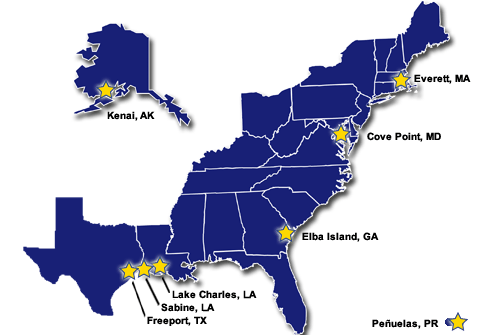
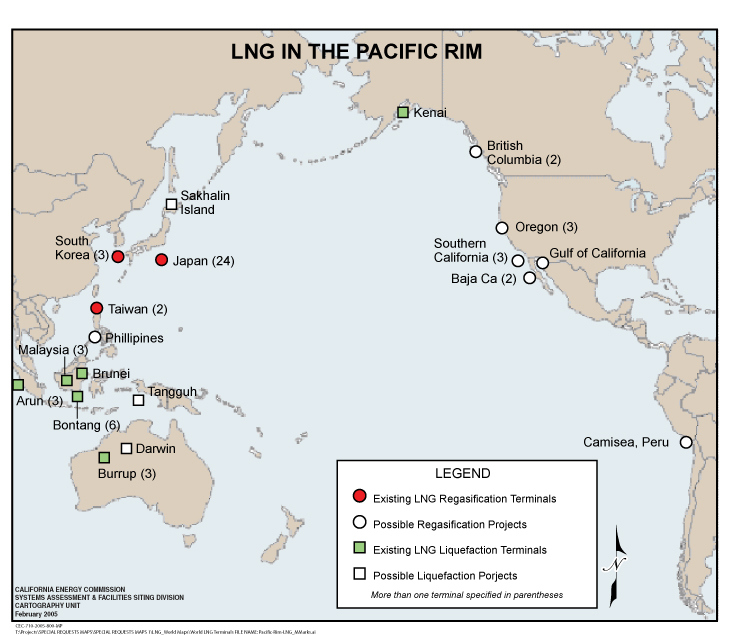
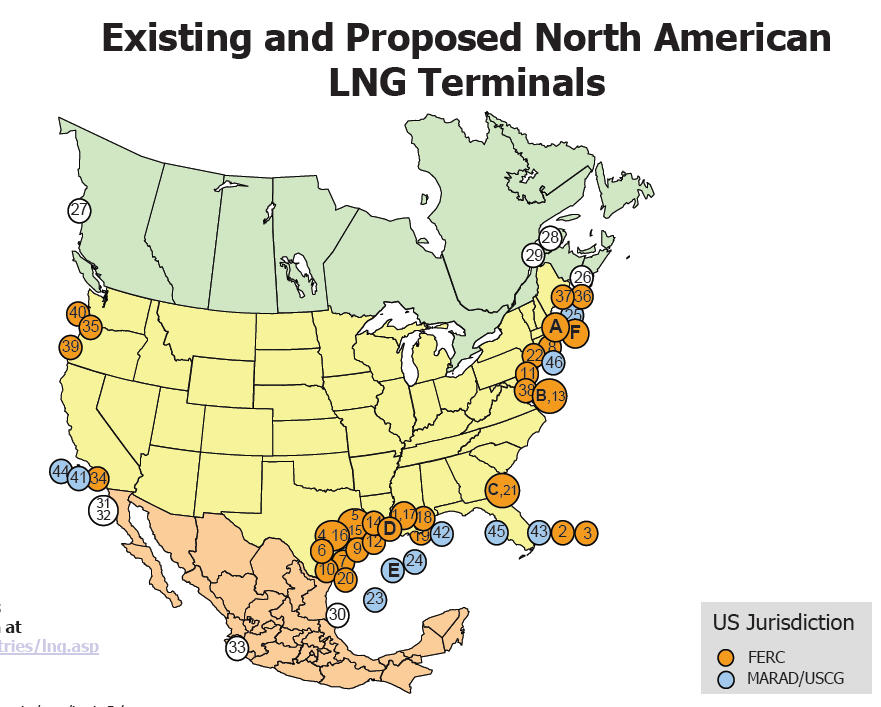

|



















